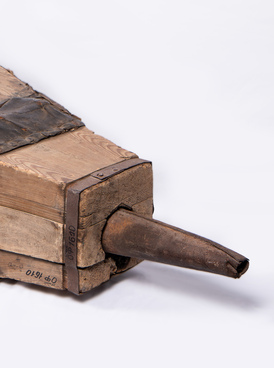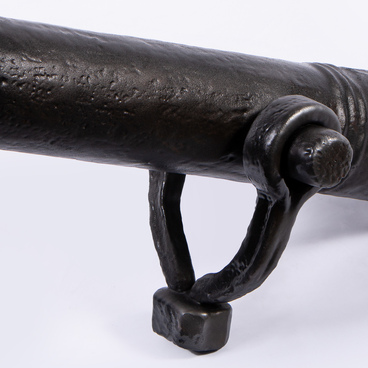The Nevyansk Tower is unique in its design. Metal structures were used in this and other 18th-century buildings for the first time. Inside the tower there is a metal frame: the spaces under the vaults and the walls were secured metal rods and wedged on figured washers from the outside. The metal frame of the tower was grounded, so it also served as the ground for the world’s first lightning rod.
The design of the iron and cast-iron beams on the seventh floor of the tower is of particular interest. A solid section of a cast iron beam measuring 190 by 145 millimeters, repeating the shape of a wooden beam in the tension zone (below), is reinforced along the entire length with a forged iron rod 60 by 50 millimeters immersed in the cast iron body. The design of such a beam, with a span of over six meters, shows an early and highly successful attempt at combining two dissimilar materials to produce an excellent system used in the 20th century in a similar combination of concrete and iron.
The wrought-iron rafters under the roof of the tower’s porch rest on cast-iron wall-plate beams embedded in the brickwork and iron rafter ties.
Iron rafters were used in the construction of only very significant objects. On the porch of the Nevyansk Tower, the rafters are steel, about two centimeters thick. They have drilled holes of similar diameters. At that time, drilling holes in steel was a unique, technically complex operation that significantly increased the cost of construction.
Today, researchers say that the porch of the Nevyansk Tower is the first object in Europe (and perhaps in the world) where a threaded nut-bolt connection was used to fasten the iron roof rafters. This significant invention in the field of construction was made at the Nevyansk plant. At that time in Europe, metal rafters were held together with wire, since drilling holes was very expensive.
The iron from which the porch rafters are made, as well as the frame of the tower, is the best Demidov iron produced at that time at the Nevyansk plant. For almost the entire 18th century, Nevyansk metal (both iron and cast iron) retained its superiority in quality. In terms of chemical composition, it was close to modern low-carbon steels. The Nevyansk iron brand “Sable” was highly valued not only in Russia, but also in Europe.



